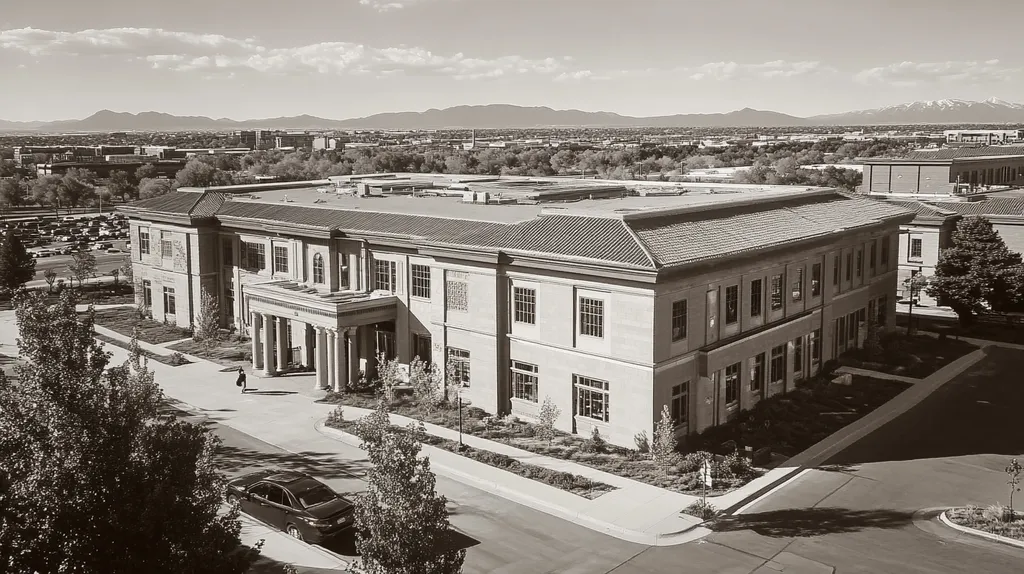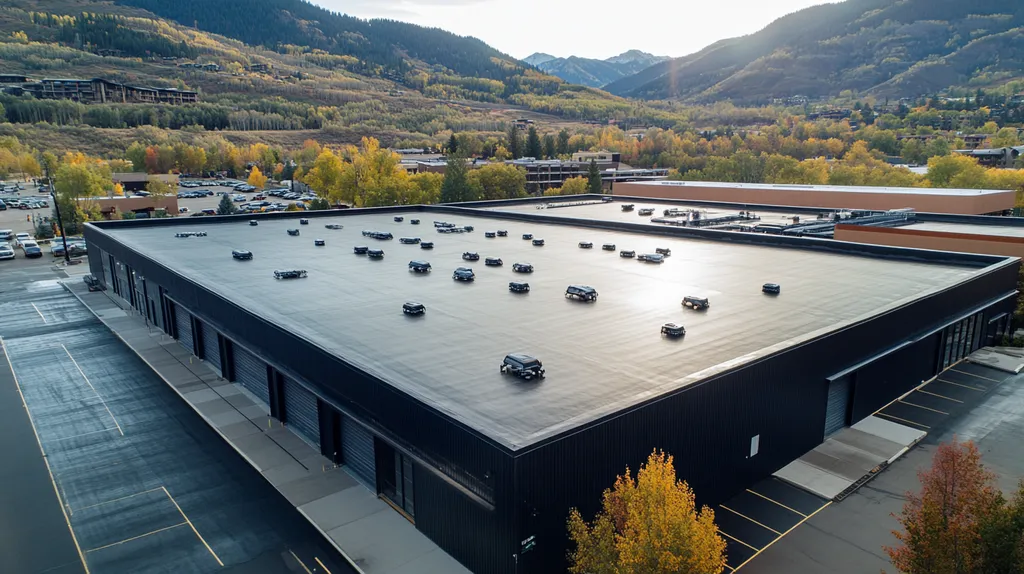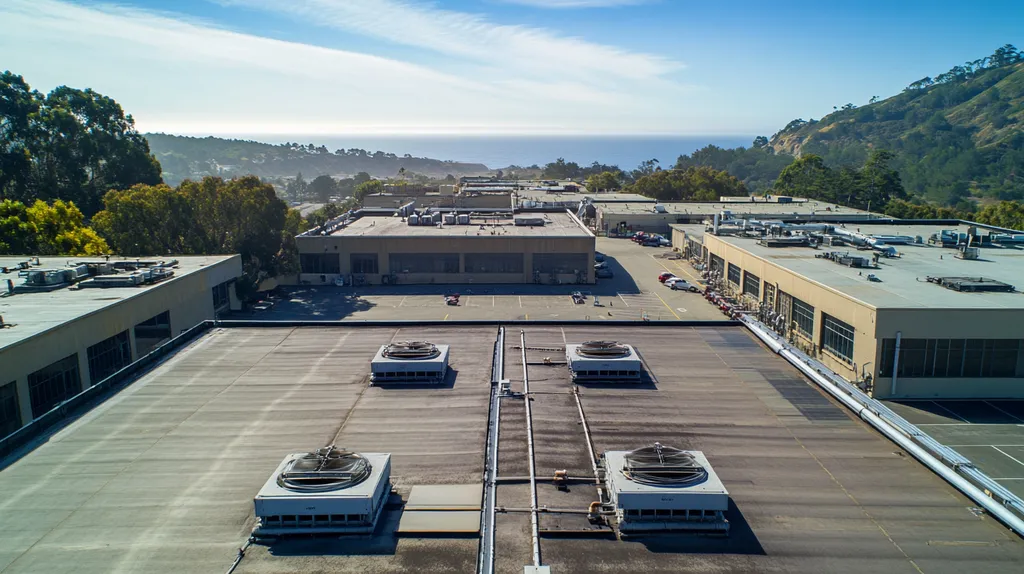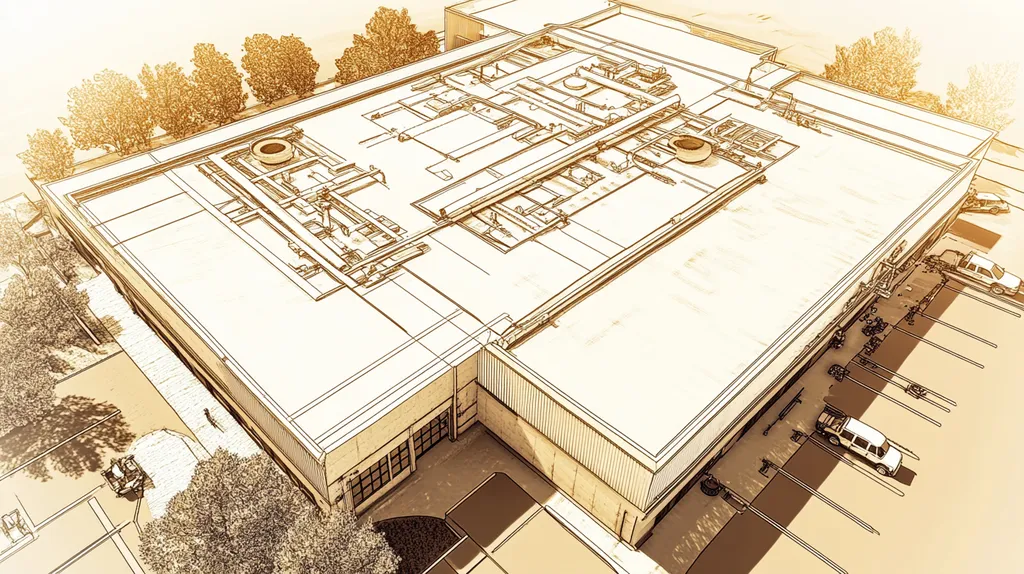In an era of soaring energy costs, commercial property owners lose millions annually due to outdated roofing myths and misinformation. Studies show that buildings with energy-efficient roofs can reduce cooling expenses by up to 30%, yet widespread misconceptions continue to prevent adoption of these proven solutions.
From assumptions about metal roofing to confusion over climate suitability, these false beliefs carry hefty financial consequences for facility managers and building owners.
This comprehensive analysis dismantles common industry myths while providing evidence-based strategies for maximizing roofing performance and energy savings.
SECTION 1: COMMON MISCONCEPTIONS
Misconceptions about energy-efficient roofing can be costly for property owners and facility managers. A 2021 study revealed that buildings equipped with energy-efficient roofs could slash cooling costs by up to 30%. Clarity on these common misconceptions is vital for making sound decisions that not only improve sustainability but also boost the bottom line. This section will debunk prevailing myths related to metal roofs, the costs of energy-efficient systems, and their suitability across various climates.
Metal Roofs Increase Summer Heat
A widespread myth suggests that metal roofs absorb heat, thereby raising indoor temperatures during the summer. In reality, metal roofs are capable of reflecting sunlight, which helps keep buildings cooler. Research indicates that weathered, light-colored metal roofs can reflect over 80% of solar radiation, drastically limiting heat absorption.
This stark difference in thermal performance reveals how metal roofs outshine traditional asphalt shingles, which tend to absorb and retain heat. A properly installed metal roofing system can be a crucial tool in reducing air conditioning costs and energy usage.
Many property owners fear that metal roofs worsen heat conditions based on outdated, less efficient designs. However, modern metal roofing options utilize innovative cool roof technology, which effectively minimizes heat absorption.
Choosing energy-efficient metal roofs not only fights against heat buildup but also boosts property value and lifespan, making them an intelligent investment.
Energy-Efficient Roofs Are Expensive
Another pervasive misconception is that energy-efficient roofs require substantial upfront investment that few can afford. While it’s true that these roofs may cost more initially, the long-term financial benefits overwhelmingly outweigh those costs. Research shows that energy-efficient roofs can save property owners thousands of dollars over their operational life.
These roofs enhance energy efficiency through improved insulation and reflective surfaces, ultimately reducing energy bills over time. Additionally, numerous state and federal incentives exist to help ease the immediate financial burden associated with these installations.
Property owners often overlook the hidden costs associated with traditional roofs, which can require more frequent maintenance and earlier replacements due to their lack of durability. Energy-efficient roofs typically come with extended warranties and greater longevity, leading to additional savings down the line.
In summary, the financial considerations surrounding energy-efficient roofing should be evaluated not only in terms of initial expenses but also through the lenses of long-term value and savings throughout the roof’s lifespan.
Cool Roofs Are Only for Warm Climates
There’s a common belief that cool roofs are only advantageous in warmer climates, which can discourage facility managers in cooler regions from adopting them. However, studies demonstrate that cool roofs can effectively manage temperatures in temperate climates, enhancing energy efficiency throughout the year.
Cool roofs function by reflecting a larger portion of sunlight and absorbing less heat, creating a more stable indoor climate that proves beneficial during both hot summers and chilly winters. Myths regarding their geographical limitations often prevent property owners from leveraging this technology in areas with varied weather conditions.
As climate change increases global temperatures, even traditionally cooler regions are experiencing unexpected heat waves, making the relevance of cool roofs indisputable across diverse environments. By investing in this technology, property owners can safeguard their investments against evolving climate factors.
Ultimately, the misconception that cool roofs are only suited for warmer climates minimizes the significant advantages they offer in any weather scenario. They represent a proactive approach to achieving energy efficiency and comfort, regardless of geographic location.
SECTION 2: PRACTICAL IMPLICATIONS
Choosing an energy-efficient roof is not just an aesthetic decision; it profoundly influences a building’s overall functionality and cost-effectiveness. For instance, studies show that energy-efficient roofs can lower cooling costs by as much as 30%. More than just cutting down expenses, the right roofing solution can enhance insulation and ventilation, creating a more comfortable and healthier indoor environment. Property owners must grasp these implications to unlock energy savings while staying compliant with prevailing building standards. This section explores the ramifications on energy consumption, insulation performance, and adherence to regulatory requirements for energy-efficient roofs.
Impact on Energy Consumption
Energy-efficient roofs are engineered to reflect a greater amount of sunlight while absorbing significantly less heat than traditional roofing options. This smart design can lead to substantial savings on air conditioning costs during hot summer months. Since energy expenses often represent a large portion of operational costs, investing in efficient roofing is a savvy financial strategy that promises considerable long-term savings.
Modern materials, like cool roofing and reflective membranes, can lower surface temperatures by as much as 20 degrees. This decrease means less energy is needed to keep indoor spaces cool. Property owners should weigh these benefits carefully when considering their roofing choices.
Moreover, many energy-efficient roofs can qualify buildings for energy credits or rebates, offering even more incentives to make the switch. Conducting a detailed review of options can uncover savings that far exceed initial installation costs.
In short, energy-efficient roofs significantly boost comfort while leading to marked reductions in energy consumption and operating costs.
Effects on Building Insulation and Ventilation
Quality insulation is crucial for maintaining stable indoor temperatures, and energy-efficient roofing systems enhance this performance dramatically. Using materials like rigid foam and reflective coatings, these roofs minimize heat transfer, ensuring that less energy is needed to keep indoor environments at an optimal temperature.
In addition, efficient ventilation is vital for preventing moisture buildup, which can lead to mold and structural damage. Many energy-efficient designs incorporate advanced ventilation systems that promote better airflow. This not only protects the building’s integrity but also helps energy savings by allowing conditioned air to circulate more effectively.
By choosing roofs that focus on both insulation and ventilation, property owners can foster healthier and more efficient environments. This strategy aligns perfectly with the growing demand for sustainable building practices while also addressing long-term maintenance considerations.
Ultimately, the improved insulation and ventilation provided by energy-efficient roofing systems can elevate overall building performance and safeguard occupant health.
Compliance with Local Building Codes
As energy efficiency becomes a priority, local building codes are raising standards for roofing systems. Property owners must realize that non-compliance can lead to hefty fines and the need for costly retrofits. Investing in energy-efficient roofs not only ensures current compliance but also future-proofs properties against upcoming regulatory changes.
Staying in line with local codes helps property owners avoid penalties, while also improving a building’s attractiveness to potential tenants. Many seek out spaces that prioritize sustainability and energy efficiency, making compliant properties particularly appealing in today’s market.
Additionally, adherence to these regulations boosts the building’s resale value, as future owners will appreciate the long-term advantages of energy-efficient roofing. Taking a proactive stance on compliance minimizes risks and can be critical in safeguarding a property’s value.
In summary, compliance with local building codes for energy efficiency is more than a legal necessity—it’s a strategic investment yielding benefits for today and tomorrow.
SECTION 3: COST OF MISINFORMATION
The prevalence of misinformation regarding energy-efficient roofs imposes serious financial hazards on commercial property owners. Misguided assumptions about roofing materials, insulation, and performance can lead to skyrocketing energy bills and unforeseen maintenance expenses. According to recent studies, poorly designed roofs can waste up to 30% more energy, creating a direct dent in a company’s profit margin. This section highlights the tangible costs linked to these misconceptions.
Higher Energy Bills and Maintenance
Many property owners mistakenly assume that conventional roofing systems provide sufficient energy efficiency, resulting in increased energy consumption and mounting utility bills. Poorly insulated roofs can cause air leaks and temperature imbalances, significantly driving up heating and cooling expenses.
This misbelief can lead to an annual energy cost spike of 20% or more. Moreover, inefficient roofing systems frequently require more maintenance, as wear and tear escalate, creating additional financial burdens. Ignoring energy-efficient alternatives can trap property owners in a cycle of escalating costs.
Furthermore, reliance on outdated materials limits opportunities for modern advancements that enhance energy efficiency. As a result, property owners forfeit potential cost savings, making it critical to educate stakeholders on the benefits of energy-efficient roofing solutions.
Reduced Roof Lifespan and Durability
Another severe consequence of misinformation is a shortened roof lifespan. Traditional roofing materials may seem less expensive initially, but they often fail prematurely under thermal stress, leading to cracks and leaks. This not only incurs replacement costs sooner than expected but also jeopardizes building integrity.
Adhering to industry standards by investing in energy-efficient insulation can substantially enhance a roof’s durability and longevity. Many owners still opt for cheaper alternatives, neglecting the long-term financial benefits of quality materials.
Moreover, issues like rust and corrosion can accelerate deterioration due to differences in protective coatings. Misinformation surrounding these treatments can lead to critical oversights. Consequently, following energy-efficient guidelines guarantees better performance and maximizes the return on roofing investments.
Missed Opportunities for Energy Savings
Property owners frequently underestimate the substantial savings energy-efficient roofs can yield. Myths suggesting minimal energy savings obscure the reality that advanced roofing technologies can cut energy expenses significantly—sometimes by up to 50%.
By overlooking these opportunities, owners risk leaving potential savings on the table. Additionally, tax incentives and rebates designed for energy-efficient upgrades could bolster their financial case, yet many simply miss out on these advantages.
Proactive energy management not only curtails expenses but also enhances building sustainability and attractiveness. With an increasing number of businesses seeking energy-efficient spaces, investing in modern roofing solutions can elevate property values and attract quality tenants, transforming a financial oversight into a competitive advantage.
SECTION 4: REALITY CHECK
As energy costs rise, the need for energy-efficient roofing is more pressing than ever. A staggering 30% of a building’s energy can escape through the roof, according to the U.S. Department of Energy. By understanding the crucial aspects of roofing materials and designs, property owners can significantly reduce energy consumption, resulting in substantial cost savings. This section will explore the reflective properties of metal roofs, the critical role of proper insulation and ventilation, and the multifaceted benefits of green roofing and solar panels for commercial properties.
Reflective Properties of Metal Roofs
Metal roofs are often overlooked as just another traditional roofing option, but their reflective properties offer remarkable benefits. These roofs can effectively reflect solar radiation, which translates to lower heat absorption and ultimately cooler buildings, especially in warmer climates.
For instance, Oak Ridge National Laboratory found that buildings with reflective metal roofs can save up to 40% on cooling costs. Such savings improve the bottom line while also contributing to reduced carbon footprints.
Additionally, by lowering heat loads, reflective metal roofs can extend the lifespan of HVAC systems, leading to fewer repairs and replacements, further easing operational expenses.
Beyond energy efficiency, incorporating metal roofs can enhance aesthetic appeal, thereby potentially increasing property values. With numerous styles and color options available, building owners can successfully merge functionality with design.
Importance of Proper Insulation and Ventilation
Proper insulation and ventilation are often underestimated yet are essential for an energy-efficient roofing system. Insulation is crucial for preventing heat loss in winter and heat gain in summer, directly affecting energy consumption.
Poorly insulated roofs can trap heat indoors, forcing HVAC systems to overwork. According to the U.S. Environmental Protection Agency, effective insulation can cut energy consumption by up to 20%, providing substantial savings.
Equally significant is ventilation, which plays a vital role in regulating temperature and moisture level within the roofing system. Proper ventilation prevents issues like mold and rot, prolonging the roof’s lifespan.
Integrating robust insulation and ventilation strategies during roof installation or upgrades promotes not just energy efficiency but also a healthier indoor environment for occupants.
Benefits of Green Roofing and Solar Panels
Green roofing systems and solar panels are gaining recognition for their wide-ranging advantages. Green roofs can absorb rainwater, reduce localized urban heat, and enhance air quality while providing additional insulation.
Research shows that a green roof can cool ambient temperatures by 5-10 degrees Fahrenheit, improving comfort for all occupants. The greenery acts as a natural buffer against extreme weather conditions, bolstering building durability.
Adding solar panels amplifies energy efficiency, allowing buildings to generate their own electricity, reducing dependence on grid power and lowering utility costs.
Moreover, investing in green roofs and solar installations can boost property values and attract environmentally conscious tenants. By adopting these innovative solutions, property owners position themselves as leaders in sustainability and energy efficiency.
SECTION 5: EVIDENCE-BASED ALTERNATIVES
As energy costs continue to climb, choosing the right roofing materials becomes imperative for reducing operational expenses and minimizing environmental impact. The U.S. Department of Energy reports that energy-efficient roofs can cut energy use by up to 15%. This section delves into essential alternatives that not only boost roofing performance but also align with evolving regulatory standards. Focus areas include selecting the right roofing materials, harnessing solar reflectance and thermal emittance, and utilizing effective roof coatings to maximize efficiency.
Selecting Energy-Efficient Roofing Materials
The choice of roofing materials is vital for enhancing energy efficiency. Options like TPO (Thermoplastic Olefin) and EPDM (Ethylene Propylene Diene Monomer) are celebrated for their durability and energy-saving properties. These materials effectively reflect sunlight, significantly reducing cooling needs during hot summer months.
Metal roofing is also gaining popularity due to its longevity and recyclability. With the right finish, metal roofs can achieve impressive solar reflectance, keeping heat absorption to a minimum. This not only conserves energy but also prolongs the roof’s lifespan.
Green roofs, adorned with vegetation, present another compelling energy-efficient choice. They provide natural insulation and combat heat island effects in urban settings. However, they require careful planning and ongoing maintenance, making them more suitable for specific applications.
Critical to the decision-making process is the local climate. Selecting a reflective or insulated roofing system tailored to the region can maximize energy savings while minimizing operational costs.
Incorporating Solar Reflectance and Thermal Emittance
Solar reflectance and thermal emittance are key characteristics that drive roof efficiency. Solar reflectance measures how much sunlight is reflected away, while thermal emittance indicates how quickly heat is released. High values in both aspects can significantly lower cooling demands.
A roof with a solar reflectance rating above 0.70 can keep building temperatures cooler in sunny climates. Properties that invest in high-performance reflective membranes often experience substantial reductions in energy usage.
The Environmental Protection Agency’s ENERGY STAR program promotes products meeting strict efficiency criteria, encouraging property owners to choose reflective roofing solutions. Opting for ENERGY STAR-rated materials not only improves energy efficiency but may also make properties eligible for valuable rebates and incentives.
Data underscores these benefits: Energy Star roofs can reduce energy costs by 20% compared to conventional dark roofs. Leveraging this information empowers companies to make informed decisions that align with wider sustainability initiatives.
Utilizing Roof Coatings for Enhanced Efficiency
Roof coatings provide an extra layer of protection while significantly boosting a roof’s energy efficiency. Designed to reflect sunlight and reduce heat absorption, these coatings help lower indoor temperatures.
Applying a reflective coating to an existing roof can enhance its lifespan and shrink cooling costs. For instance, white elastomeric coatings can reflect up to 90% of solar energy, leading to considerable energy demand reductions.
Additionally, roof coatings are generally more affordable than a full roof replacement. This cost-effective solution allows property owners to extend the life of their roofs while avoiding hefty expenses.
To maintain optimal performance, regular maintenance and reapplication of roof coatings are essential. Implementing proactive maintenance protocols is crucial for ensuring ongoing efficiency and preserving roof integrity.
SECTION 6: TEST AND VERIFY
In the realm of energy-efficient roofing, testing and verification are not just optional; they are essential. Commercial and industrial property owners who overlook this critical step face the risk of soaring energy costs and unforeseen roof failures. By conducting regular assessments, property owners can enhance roof performance, drive sustainability efforts, and optimize energy consumption, ultimately leading to significant cost savings.
Monitoring Energy Usage Patterns
Tracking energy usage patterns is crucial for understanding how an energy-efficient roof contributes to overall building performance. Property owners can utilize smart technology for real-time monitoring of energy consumption, enabling facility managers to detect usage trends, peak demand periods, and inefficiencies.
This data provides valuable insights into the effectiveness of roofing materials in reducing thermal loads. For instance, cool roofs, designed to reflect more sunlight, can demonstrate significantly lower HVAC usage during peak summer months. Analyzing energy data allows property owners to make informed maintenance decisions and plan for future renovations.
Establishing a thorough energy monitoring strategy involves setting clear benchmarks and consistently reviewing performance against these standards. This proactive approach highlights any deviations from anticipated energy savings, enabling timely corrective actions.
The long-term advantages include substantial cost reductions and improved environmental sustainability. Owners committed to actively monitoring energy usage are better positioned to enhance their building’s efficiency and operation.
Conducting Regular Roof Inspections
Performing regular roof inspections is essential to ensuring that energy-efficient roofing systems retain their intended performance. A comprehensive inspection schedule helps identify potential issues before they escalate, preventing costly repairs or replacements. Industry best practices recommend conducting inspections at least biannually, ideally in spring and fall.
During inspections, property managers should look for indicators of wear, such as water pooling or damage that could undermine energy efficiency. Utilizing thermal imaging technology can be particularly effective for detecting thermal losses or insulation failures.
Addressing observed issues promptly not only maintains roof integrity but also supports energy-efficient properties. Well-maintained roofs reflect heat effectively, helping to lower heating and cooling costs. Neglecting crucial inspections can lead to increased energy usage and a diminished lifespan for the roofing system.
Additionally, documenting inspection findings assists with compliance and future planning. Regular maintenance fosters excellence in roof longevity and energy performance, making it an indispensable task for property owners.
Compliance with Cool Roof Rating Council Standards
Adhering to the Cool Roof Rating Council (CRRC) standards is pivotal for property owners aiming to optimize energy efficiency. These standards evaluate and verify roofing products based on their solar reflectance and thermal emittance. Meeting these criteria can lead to significant reductions in energy consumption.
The CRRC offers a reliable certification process, assuring property owners that their selected roofing materials meet high-performance standards. Choosing materials with CRRC certification can facilitate robust long-term savings on energy costs while supporting sustainability initiatives and adhering to local building codes.
Regularly reviewing product certifications ensures compliance and consistency in performance. As new materials and technologies emerge, staying informed about industry benchmarks aids informed roofing choices. Ignoring these details can lead to poor decisions that compromise sustainability objectives.
In conclusion, compliance with CRRC standards not only bolsters roof performance but also aligns with a broader commitment to environmental responsibility. Property owners who prioritize certified materials can anticipate enhancements in energy efficiency as well as increased property marketability.
The Bottom Line
With energy costs rising by 30% in the past decade, property owners can no longer afford to ignore roofing efficiency standards.
The evidence is clear: buildings utilizing energy-efficient roofing systems consistently demonstrate 15-30% reductions in cooling costs while extending roof lifespans by up to 15 years.
Modern solutions like cool roofs, reflective membranes, and proper insulation deliver measurable returns through decreased energy consumption and enhanced building performance.
By moving past outdated misconceptions and embracing evidence-based roofing standards, facility managers can dramatically reduce operational costs while future-proofing their properties against rising energy expenses.
The time for half-measures has passed – implementing comprehensive energy-efficient roofing solutions is now a critical business imperative for commercial property success.
FREQUENTLY ASKED QUESTIONS
Q. Do metal roofs increase cooling costs for commercial roofs?
A. It’s a common myth that metal roofs absorb heat, raising indoor temperatures. In reality, they can reflect over 80% of solar radiation, keeping buildings cooler. Properly installed metal roofing systems are designed to minimize heat absorption and can lead to significant air conditioning savings.
Q. Are energy-efficient roofs too expensive for industrial roofs?
A. While energy-efficient roofs may have a higher upfront cost, their long-term savings outweigh this initial investment. These roofs can reduce energy bills and maintenance costs significantly over their lifespan, often leading to considerable savings in operational expenses.
Q. Can cool roofs be beneficial in colder climates for commercial buildings?
A. Absolutely! Cool roofs reflect sunlight, improving indoor comfort across various climates. They can stabilize indoor temperatures during both warm summers and cold winters, making them valuable even in regions with milder temperatures.
Q. How do energy-efficient roofs affect energy consumption?
A. Energy-efficient roofs significantly reduce energy consumption by reflecting sunlight and minimizing heat absorption. This leads to lower cooling demands and reduced operational costs. They can also provide rebate opportunities through energy credits, enhancing not just efficiency but also savings.
Q. How does misinformation impact industrial roofing decisions?
A. Misinformation can lead property owners to choose suboptimal roofing solutions, resulting in higher energy bills and maintenance expenses. Misguided beliefs often prevent them from exploring energy-efficient options that could yield substantial savings over time.
Q. What role do reflective properties play in energy-efficient roofs?
A. Reflective properties are crucial as they determine how much sunlight a roof can reflect, influencing energy efficiency. Roofs with high solar reflectance are efficient at keeping buildings cool, particularly during hot weather, reducing the need for extensive air conditioning.
Q. Why is testing and verification important for energy-efficient roofs?
A. Regular testing and verification ensure that energy-efficient roofs perform at their intended levels. By monitoring energy usage and conducting roof inspections, property owners can identify issues early, optimize performance, and safeguard their investments against unexpected failures.











